House Cats vs. Wildcats
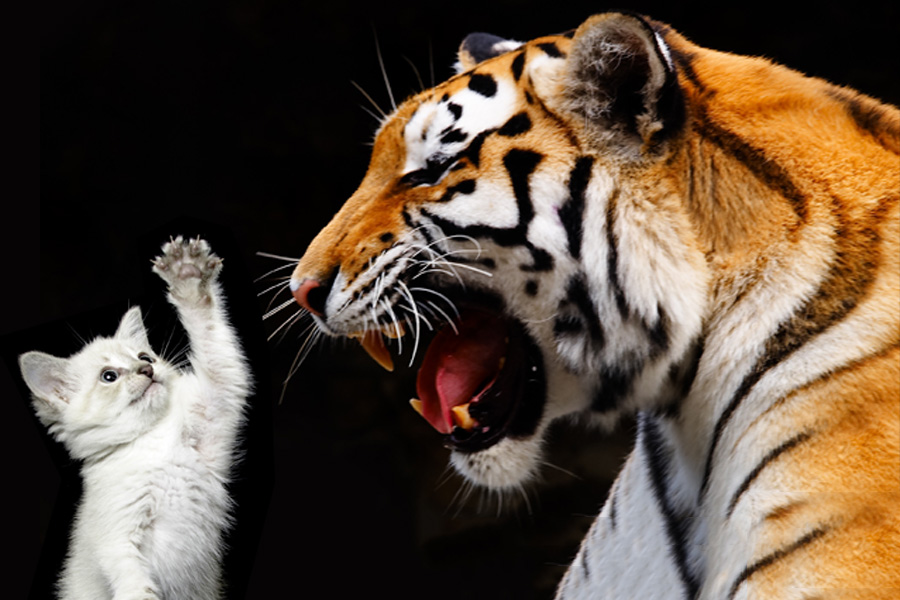
In my mind, there is no difference between domestic cats and wild cats. I only see felines hungry for the love that I alone can give them. Practically, the divide between the two is big at times but almost imperceptible in other places. Case in point: everyone in the cat world loves a good box.
From what they eat to how much they hate us, I’m looking at how domestic cats and wildcats stack up. Honestly, though, when cats are involved, everybody wins. Won’t you join me on this magical journey?
Relationship With Humans
Domestic Cats
The most common complaint dog people have against cats is that they’re aloof and disinterested in you. But really, the jury is still out on whether our furry friends hate us or just show love differently.
Some recent studies, like this one from Oregon State University, make the case that, yes, domestic cats do enjoy us–some even more than they enjoy food. When given the option of interacting with humans, eating food, playing with a toy, or investigating an interesting scent, 50% of the feline participants chose social interactions over the other three options. (Unrelated: how does one debrief a cat after a psychological study?)
 Another study, at the University of Lincoln, found that cats have no real need for their owners. For the most part, they’re solitary creatures who don’t actually need humans as source of safety or security. Some say this might actually be high praise for owners. They say that if cats don’t need us, but stick around anyway, then clearly there’s something about our company that they genuinely enjoy. But maybe that’s just the mental gymnastics of a cat lover, and what they enjoy is exploiting us.
Another study, at the University of Lincoln, found that cats have no real need for their owners. For the most part, they’re solitary creatures who don’t actually need humans as source of safety or security. Some say this might actually be high praise for owners. They say that if cats don’t need us, but stick around anyway, then clearly there’s something about our company that they genuinely enjoy. But maybe that’s just the mental gymnastics of a cat lover, and what they enjoy is exploiting us.
Ultimately, the issue of whether or not domestic cats actually like us is still up in the air because there’s not a ton of research about the subject. It’s an interesting topic, but since the study of cat psychology isn’t likely to lead to many useful breakthroughs, it’s easy to see why organizations aren’t lining up to throw grant money at this research.
And really, does it matter one way or another if my cats like me? I’m going to hold them like a baby and kiss them on the forehead either way. It’s one of the perks of being at the top of the evolutionary chain.
Wildcats
While wildcats may have a reputation for being vicious man eaters, they’re surprisingly indifferent to our existence as well. This is mostly because in the wild, our paths rarely cross. Think about it – when’s the last time you were just chilling on the African savanna or the Yukon wilderness?Usually, the breakdown in human/wild cat relations occurs when humans start doing things we have no business doing – namely caging and keeping these *ahem* wild animals. That’s not to say that cat attacks aren’t tragic, but it’s clear that random encounters are the exception, while attacks around exotic pet residences and unlicensed zoos are much more common.
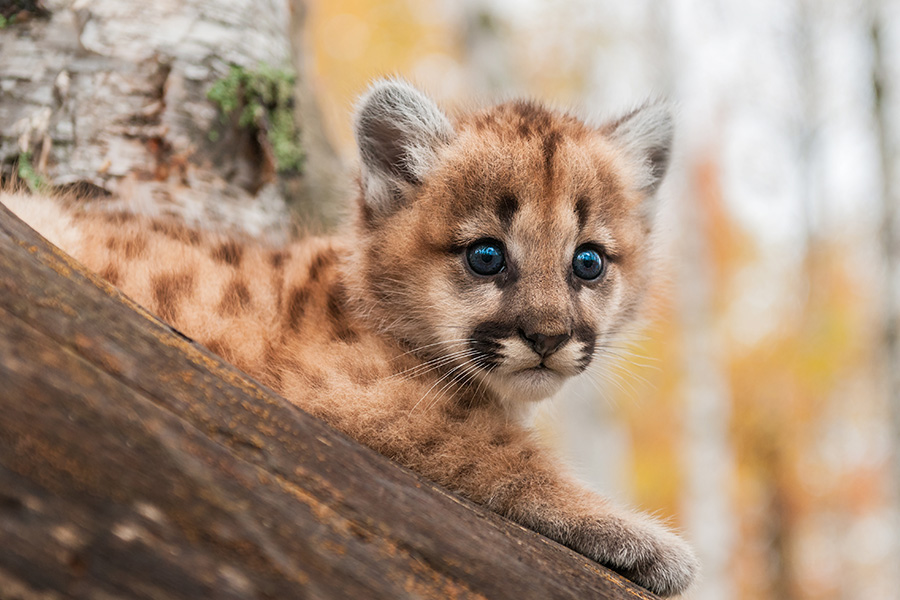 Sure, there are rare cases of humans and wild cats coexisting peacefully (and adorably), but 99% of the time, keeping these critters as pets or companions is a terrible idea. For one, the risks of doing so are just too high – I don’t want to spend my time wondering if and when my furry friend is going decide that I’m better suited as dinner than a playmate. But it’s also incredibly cruel – what kind of friend cages another friend when they know good and well that friend needs wide open spaces to thrive?
Sure, there are rare cases of humans and wild cats coexisting peacefully (and adorably), but 99% of the time, keeping these critters as pets or companions is a terrible idea. For one, the risks of doing so are just too high – I don’t want to spend my time wondering if and when my furry friend is going decide that I’m better suited as dinner than a playmate. But it’s also incredibly cruel – what kind of friend cages another friend when they know good and well that friend needs wide open spaces to thrive?
There are some great organizations out there caring the best way they know how for exotic cats that couldn’t make it in the wild, but for the most part, the relationship between humans and wild animals should be close to nonexistent.
Social Structure
Domestic Cats
Anyone who’s lived with a group of cats (let me just say, from personal experience, they are terrible roommates) has probably see them exhibit some clique-like behavior. Snowball and Pumpkin might be inseparable BFFs, but the claws come out if Rex and Patches so much as make eye contact with one another. It’s like an episode of The Real World, if cast were hairy, sociopathic middle schoolers who poop in a box.
 We know that social cooperation is possible among domestic cats, but it’s not necessary for their well-being. In fact, given enough opportunities for mischief, a cat can be perfectly content to live the solo life.
We know that social cooperation is possible among domestic cats, but it’s not necessary for their well-being. In fact, given enough opportunities for mischief, a cat can be perfectly content to live the solo life.
But even if your cats are chummy with one another, chances are you’ll still see them spend a lot of alone time in their respective “territories.” Domestic cats, like their wild cousins, are solitary hunters by nature. And even though they don’t need to search for food, the impulse to stake out their own personal hunting ground remains – which means you’re likely to find them negotiating disputes about who gets what real estate.
For example, one of my cats has dibs on pretty much the entirety of my bed (I haven’t had a good night’s sleep in years), while the other likes to spend her days in the bathroom, sitting on her majestic throne, the toilet.
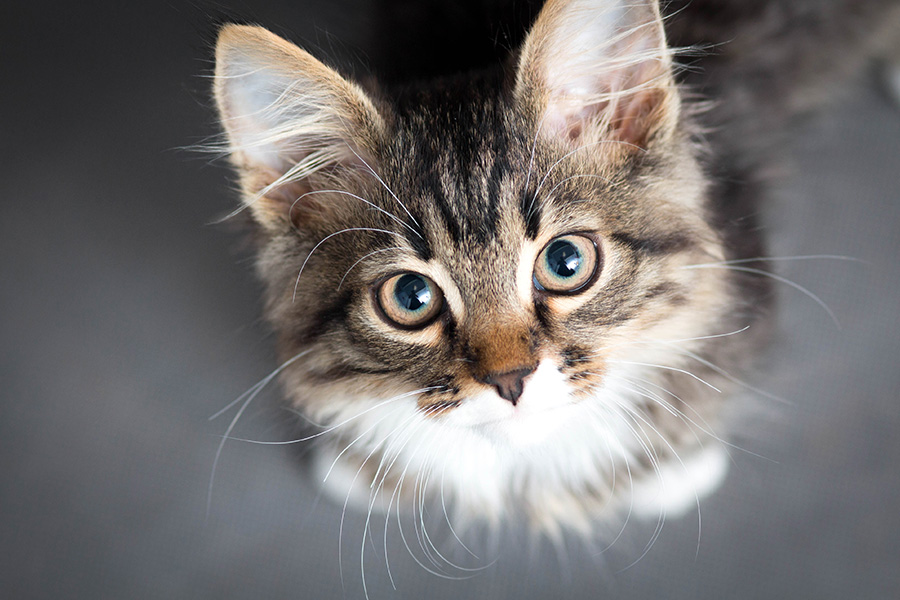 So, domestic cats definitely have a social hierarchy, but many times it’s simply a hierarchy of one. And even if they do bother to socialize with other cats, it’s a very loose association, without any hard and fast rules about figuring out who’s friend and who’s foe.
So, domestic cats definitely have a social hierarchy, but many times it’s simply a hierarchy of one. And even if they do bother to socialize with other cats, it’s a very loose association, without any hard and fast rules about figuring out who’s friend and who’s foe.
Wildcat Loners
When you look at most wild cats, this isolationism seems to be the norm as well. Tigers, cougars, panthers, and many of the less-popular (but equally adorable) wild cat species generally take a Ron Swanson approach to life. Mothers and cubs are the exception, obviously, but once those ungrateful brats are old enough to be killing machines, they’re out the door.
Intra-species violence due to territorial disputes is rare, and some wild cats will knowingly share areas with one another. However, don’t expect them to team up and form a hunting party. (Heaven help us all if they ever do.)
Dysfunctional Families
The two big exceptions to this wild cat rule are lions and cheetahs. They apparently missed the loner memo from Mother Nature.
Lion society is organized into prides of six or so lionesses (that are all related) and their cubs. All in all, prides can grow to be as big as 20 or more members. If lion life sounds like a matriarchal, feminist utopia, quit reading now because I’m about to shatter that dream.
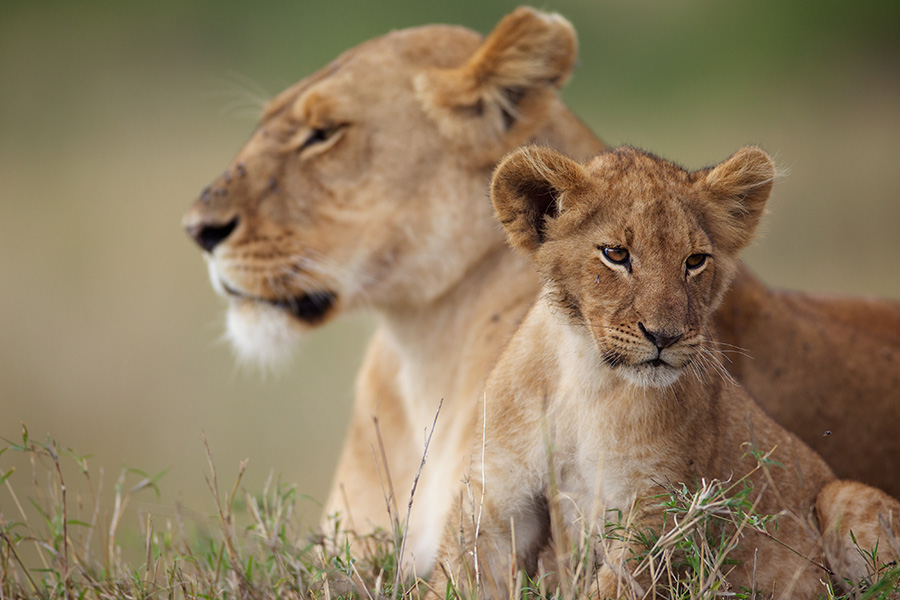 In addition to prides, male lions will form coalitions. These are smaller groups of about five to seven lions. They may be related, but they don’t have to be. Up to 42% of coalitions are unrelated. These guys basically spend their time prowling around looking for a pride to impregnate. And what do they do when they find one? What any upstanding gentleman would do – kill the pride’s current cubs, of course! Lionesses with cubs will not mate for almost two years after they are born, but cub death restarts that clock, making mating an immediate possibility.
In addition to prides, male lions will form coalitions. These are smaller groups of about five to seven lions. They may be related, but they don’t have to be. Up to 42% of coalitions are unrelated. These guys basically spend their time prowling around looking for a pride to impregnate. And what do they do when they find one? What any upstanding gentleman would do – kill the pride’s current cubs, of course! Lionesses with cubs will not mate for almost two years after they are born, but cub death restarts that clock, making mating an immediate possibility.
If that wasn’t messed up enough for you, it’s not just male lions who commit infanticide – female lions have also been known to kill the cubs of rival prides in a strategic attempt to divert the attention of a coalition from their own cubs. If you thought The Lion King was brutal, well…turns out Disney was taking it easy on you.
It’s not all bad
Cheetahs, on the other hand, have learned a little bit more about how to play nice with one another. Unlike the female-centric lion prides, adult female cheetahs are normally solitary creatures. It’s the males of the species that stick together to create cute little cheetah fraternities. These males are normally related, but not necessarily so. As with most cats, they do this to protect their hunting territory.
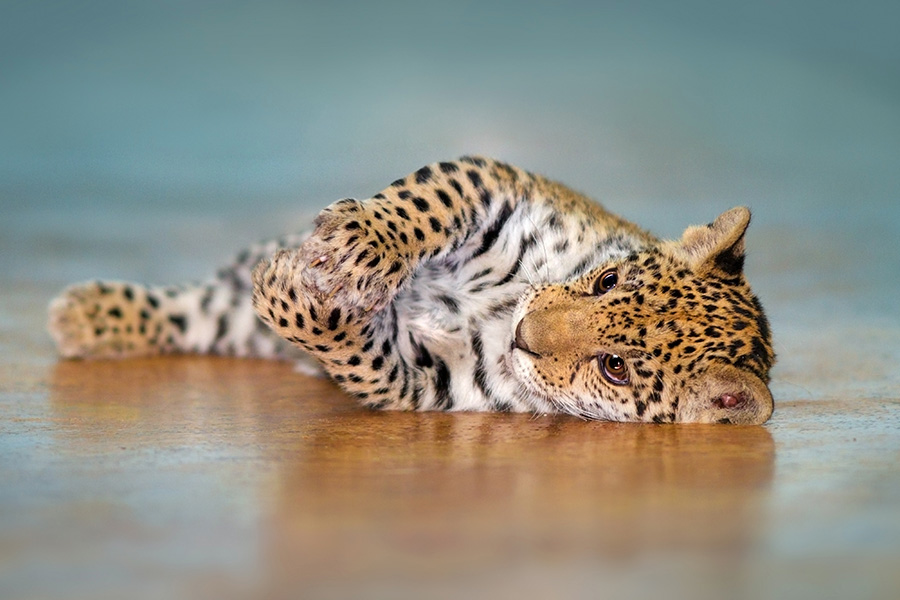 To everyone’s relief, there has never been a documented case of cheetah infanticide by rival males. They’re the cool stepdads of the animal kingdom.
To everyone’s relief, there has never been a documented case of cheetah infanticide by rival males. They’re the cool stepdads of the animal kingdom.
Diet
There’s no ifs ands or buts about it – cats are carnivores through and through. Whether it’s a majestic Bengal tiger in the forests of India, or the ungrateful sack of fat asleep on your couch, a five-star meal for a cat involves ripping flesh from bone.
 When it comes to what poor critters are getting eaten by cats, it’s all about location and size. Domestic cats and smaller wild cats may think of themselves as apex predators, but there’s no way they could take down a gazelle or a water buffalo, even if they wanted to. So, these pint-sized predators are normally limited to rodents and birds – basically if it’s furry and/or cute, it’s fair game for these ruthless killers. They’ve also been known to eat insects and spiders, which for me, elicits no sympathy. The more spiders my cats eat, the less I have to worry about those eight-legged monsters eating me.
When it comes to what poor critters are getting eaten by cats, it’s all about location and size. Domestic cats and smaller wild cats may think of themselves as apex predators, but there’s no way they could take down a gazelle or a water buffalo, even if they wanted to. So, these pint-sized predators are normally limited to rodents and birds – basically if it’s furry and/or cute, it’s fair game for these ruthless killers. They’ve also been known to eat insects and spiders, which for me, elicits no sympathy. The more spiders my cats eat, the less I have to worry about those eight-legged monsters eating me.
Big cats, on the other hand, have some seriously massive caloric requirements. For example, wild tigers need about 140 calories per 2 pounds of body weight. For a full-grown male, that averages out to about 6300 calories per day. What a delightful, gluttonous life that must be.
However, tigers are notoriously bad at portion control. (Turns out there’s no Weight Watchers in the animal kingdom.) That means their intake tends to come in bursts. After a kill, tigers have a tendency to gorge themselves silly for a day or two, followed by a few days of fasting while they’re on the hunt. The wildcats are clearly the winners here, because that sounds awesome.
Purrs vs Roars
Cats are prone to lots of weird noises, but by far, we most commonly associate them with purring and roaring. In fact, these two behaviors are how we separate the Big(™) cats from the not-so-big cats. As you’ll see, this distinction doesn’t follow the traditional domestic vs. wild pattern.
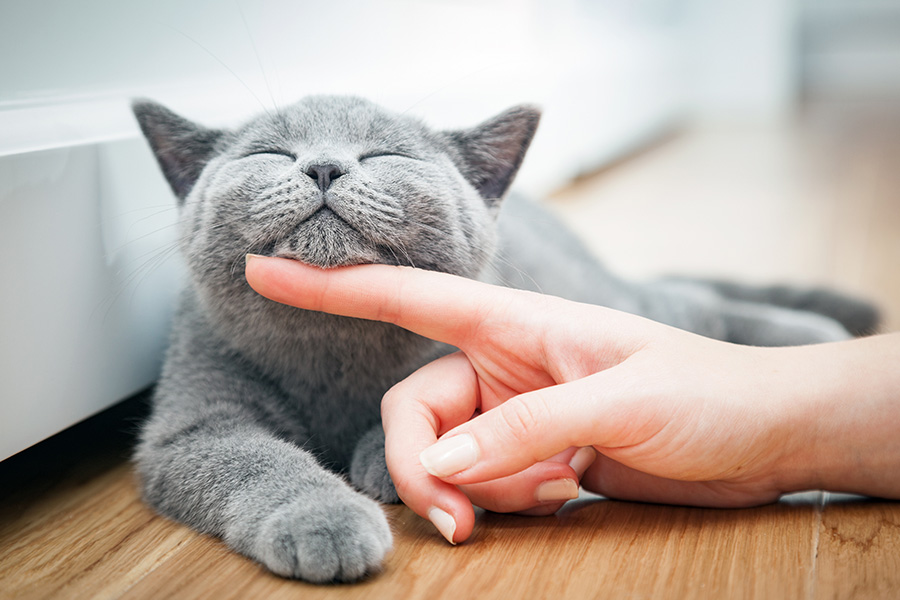 In the feline kingdom, size doesn’t matter. Take the cheetah, for example. At 140 terrifying pounds, you would think it would be a kitty heavyweight, right? However, in a major ego blow to cheetahs everywhere, it doesn’t earn the official designation of “big cat.” And that all has to do with the fact that cheetahs can’t roar.
In the feline kingdom, size doesn’t matter. Take the cheetah, for example. At 140 terrifying pounds, you would think it would be a kitty heavyweight, right? However, in a major ego blow to cheetahs everywhere, it doesn’t earn the official designation of “big cat.” And that all has to do with the fact that cheetahs can’t roar.
What enables roaring?
In fact, only four cat species can roar, and therefore can claim the title of big cat. Those are lions, jaguars, leopards, and tigers. And why exactly can some cats roar while others are stuck with much-less-impressive hissing? Bone stuff, of course!
 If you were to look at the voice boxes of most cat species (highly inadvisable), you would find a little something I like to call the epihyal bone. (Okay, scientists like to call it that – I’m not even sure how to pronounce it.) Being a bone, it’s rather, well, boney – that is to say, it’s rigid. However, when you look at big cats, this bone is missing, and in its place is a much more flexible ligament strip. This flexibility allows them to produce a much louder, deeper sound. It also doesn’t hurt that big cats’ vocal cords are basically huge, meaty ropes.
If you were to look at the voice boxes of most cat species (highly inadvisable), you would find a little something I like to call the epihyal bone. (Okay, scientists like to call it that – I’m not even sure how to pronounce it.) Being a bone, it’s rather, well, boney – that is to say, it’s rigid. However, when you look at big cats, this bone is missing, and in its place is a much more flexible ligament strip. This flexibility allows them to produce a much louder, deeper sound. It also doesn’t hurt that big cats’ vocal cords are basically huge, meaty ropes.
However, cats shall not live by ligaments alone – just ask the snow leopard. While these cats are missing the epihyal bone as well, they lack a layer of fatty tissue that other big cats possess. This doesn’t stop them from trying to roar, though. But the haunting noise they end up making sounds more like a person being tortured.
If you can’t roar, purr
For everyone else – domestic and wildcat alike – purring is the only option. While science has been pretty divided (and sometimes downright clueless) about how cats purr, the current theory is that as cats breathe in and out, air hits their vibrating larynxes, leading to the sound and sensation of a purr. As you’ll remember, those larynxes are vibrating because of Bone Stuff.
The “Why?” of purring is a bit more difficult to parse out. It’s clear to anyone who’s ever owned a cat that they purr out of contentment, but that’s not the only time a cat revs its engine – they also purr when sick, scared, or stressed.
 Because it shows up in some negative situations, it’s likely that purring is a way for cats to calm themselves. Think of it as a feline breathing exercise. Some people also argue that a cat’s purr is used to heal, since they fall in a frequency range (an average of 21 hz) that promotes tissue regrowth. This may ultimately be promising for medical treatment of both cats and humans alike, but for now, don’t trust a doctor that tries to pulverize your kidney stones by covering you in kittens.
Because it shows up in some negative situations, it’s likely that purring is a way for cats to calm themselves. Think of it as a feline breathing exercise. Some people also argue that a cat’s purr is used to heal, since they fall in a frequency range (an average of 21 hz) that promotes tissue regrowth. This may ultimately be promising for medical treatment of both cats and humans alike, but for now, don’t trust a doctor that tries to pulverize your kidney stones by covering you in kittens.
Who am I kidding? I’d pay for that regardless.







